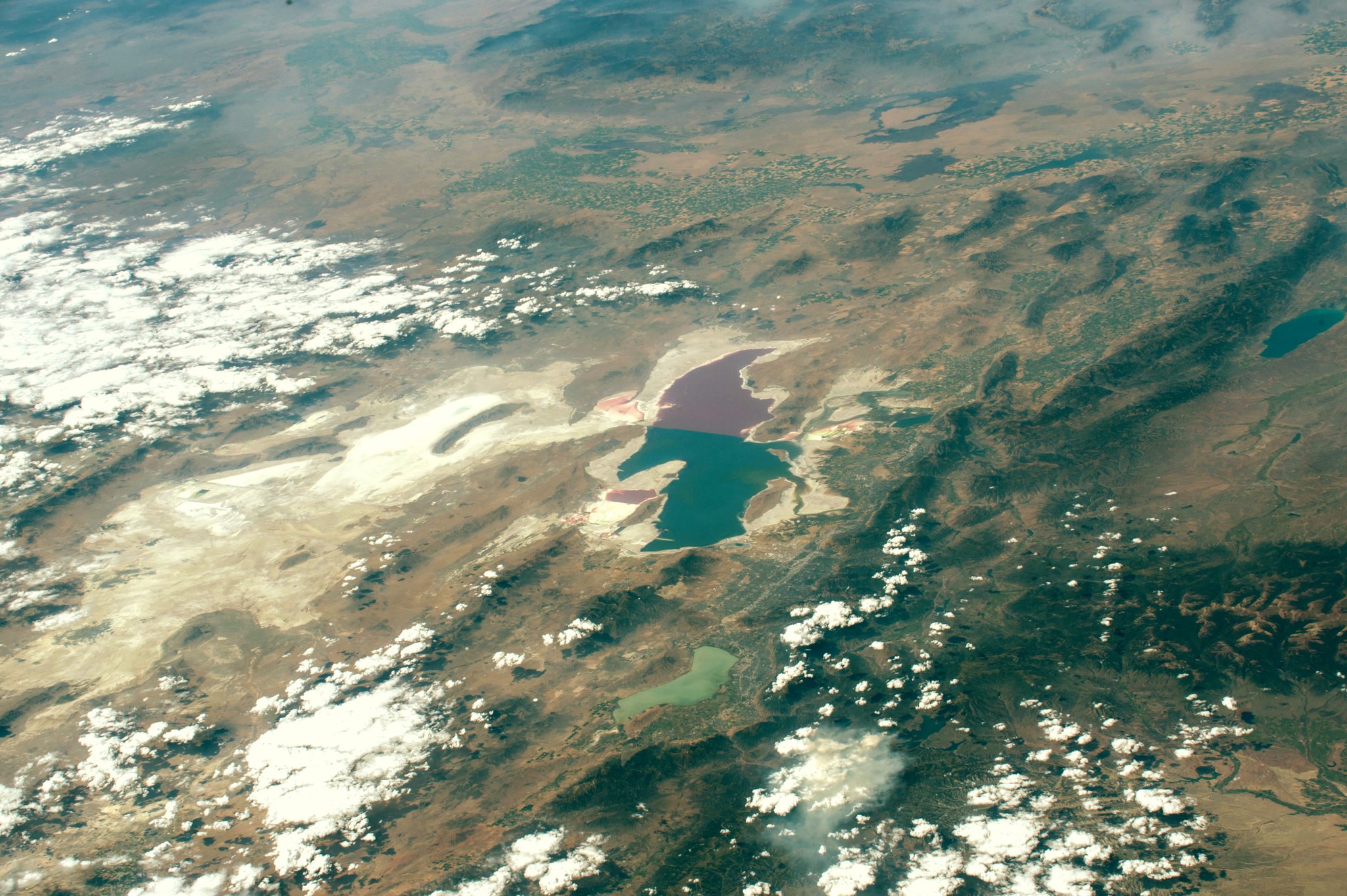[:ja]パオロ・ネスポリ宇宙飛行士が撮影した、米国ユタ州の北部にある塩水湖グレートソルト湖です。

湖にはベア川、ウィーバー川、ジョルダン川の3つの河川が注ぎ込んでいます。流れ出す河川はなく、塩分濃度が海水よりも高い。動物はアルテミアと呼ばれる節足動物しか生息せず、湖畔には「海水」浴場があります。南北で色が異なるのは、築堤により濃度が異なるからです。1950年代に築堤ができ、北側には流入河川がないため、湖水の塩分濃度が高くなっています。
地上の様子はこちらです。

参考文献: Paolo Nespoli’s Tweet
ウェブ地球儀で地球俯瞰画像を見る: LiVEARTH
[Earthview Wonders] No.370: Great Salt Lake🇺🇸
Astronaut Paolo Nespoli captured from ISS Great Salt Lake, U.S.

The Great Salt Lake is the largest salt water lake in the Western Hemisphere, and the eighth-largest terminal lake in the world. On average, the Great Salt Lake is 4 times saltier than the ocean and also has heavy metals, high concentrations of sulfur and petroleum seeps. In spite of all this, the lake is the saltiest body of water to support life. The lake hosts brine shrimp, algae and a diverse array of microbes, not to mention the roughly 5 million birds that migrate there annually.
Local scenery on the ground is as follows.

Reference: Paolo Nespoli’s Tweet
See earthview photo gallery with web-globe: LiVEARTH[:en][Earthview Wonders] No.370: Great Salt Lake🇺🇸
Astronaut Paolo Nespoli captured from ISS Great Salt Lake, U.S.

The Great Salt Lake is the largest salt water lake in the Western Hemisphere, and the eighth-largest terminal lake in the world. On average, the Great Salt Lake is 4 times saltier than the ocean and also has heavy metals, high concentrations of sulfur and petroleum seeps. In spite of all this, the lake is the saltiest body of water to support life. The lake hosts brine shrimp, algae and a diverse array of microbes, not to mention the roughly 5 million birds that migrate there annually.
Local scenery on the ground is as follows.

Reference: Paolo Nespoli’s Tweet
See earthview photo gallery with web-globe: LiVEARTH[:]